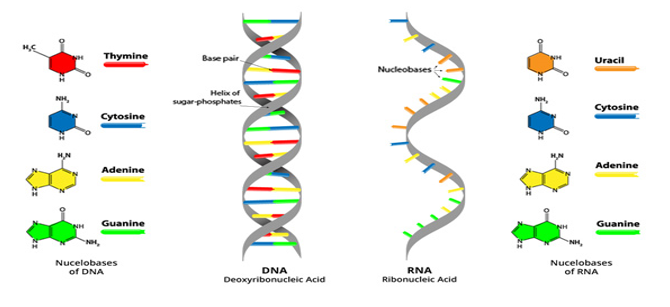Are you positive you are positive?
The news abounds with reports of new cases of Covid-19 throughout the world based on RT-PCR testing. Just this past Sunday September 12th, the U.S. and Brazil both reported approximately 45,000 cases and about 1000 deaths from Covid-19, indicating about a 2% fatality rate. Israel has stiffened its lockdown with 150,000 case positives and approximately 1000 deaths as well for a fatality rate of less than 1%.
Kary Mullis PhD in biochemistry won the Nobel Prize in chemistry in 1993 for inventing the RT-PCR testing that is being used to detect Covid-19 “cases” today. The technique finds a fragment of genetic material (DNA) and doubles it through repeated cycles amplifying the material to see if there is an appreciable amount of a fragment of the DNA of the virus. However, Covid-19 is an RNA virus. How does an RNA virus get converted to DNA for validation through RT-PCR testing and what potential problems could arise from this testing?
When a nasal or saliva swab is used for testing it will contain hundreds if not thousands of bacteria and viruses all of which contain RNA and DNA including corona viruses from the common cold that could sabotage the accuracy of the test. It will also have DNA of the person being tested. The RT part stands for reverse transcriptase and this requires identifying the RNA of the virus you want tested, and separating it from the surrounding DNA of other bacteria and viruses. An enzyme and a primer of genetic material is then used to convert the RNA (single strand) to match up with corresponding nucleic acids to form DNA (a double strand) of genetic material.

This portion of the process was invented by David Baltimore and Howard Temin in 1970.
It then goes through the PCR phase (polymerase chain reaction) invented by Mullis, where like a chain reaction, the viral strands are doubled through 30 or more cycles. Has anyone ever asked you if you would rather have a million dollars or a penny doubled every day for 31 days? If you answered a million dollars, you would have shortchanged yourself. A penny doubled every day would give you a billion dollars after 31 days (30 cycles will multiply the material a billion times, and 40 cycles will multiply it a trillion times and amazingly each cycle can be done relatively quickly.
What most do not realize is that different labs use different enzymes in the RT phase which could affect the results by a factor of 10x. The more RNA you start with, the more DNA you wind up with. Also, different tests and different countries use differing amounts of cycles. Some of the newer tests approved by the FDA are using 40-45 cycles in the PCR phase, over the 30-37 cycles that have most often been used in the past. Testing running for 60 cycles would show everyone positive. Tests running in the 40-45 cycle range broadens the positive range sufficiently enough to create more false positives than false negatives. The more cycles it goes through, the greater the chance that an appreciable amount of genetic amplification would occur to result in a positive test indicating that the person has been exposed to the virus and has a higher than normal viral load. Is this variance in testing the reason why South Korea has a positive testing rate of .9%, Canada 1.2%, Spain 11%, Mexico 46%, and the U.S. 5% of their respective populations?
With such disparate testing results from around the world, no wonder, Kary Mullis PhD stated “RT-PCR testing was not intended to detect an infection”. The application was meant for a laboratory setting to clone a nucleic acid sequence perhaps for manufacturing purposes. Mullis is on record, that the standard technique of purifying and isolating the entire virus was still the only way to be sure that the virus was present without any potentially contaminating factors. This is a much more difficult process. When his RT-PCR testing was used to associate HIV infection with AIDS in the mid and late ’90s, he was outspoken in his criticism of this application of his discovery. Unfortunately, Mullis passed away last year, but for the same reasons he questioned the HIV association, many scientists are questioning the application of RT-PCR testing for its use in qualifying the diagnosis of cases of Covid-19 infection and Covid-19 carriers today. The quantitative PCR test (qPCR), also called real-time PCR, (another RT-PCR to make it confusing) is a more expensive, and more accurate testing method. A qPCR test through stool analysis from the company Diagnostic Solutions that I use for digestive stool analysis has been approved by the FDA.
Final Thoughts
Prior to my learning more about RT-PCR testing for this newsletter, my opinion was that the reverse transcriptase RT-PCR testing was a sensitive and trusted method of detecting an infection. My opinion has been challenged by these new facts. The voices of the legitimate scientific minds who are questioning the popular meaning of the Covid-19 infection case rate and the conclusions being made based on RT-PCR testing need to be heard. Some of these scientists and doctors are having their opinions taken off YouTube and Facebook for “violating community standards”. It worries me that a scientific conversation about this subject would be censored. Scientific debate should be encouraged. With so many false positives from asymptomatic people, and false negatives from people who are symptomatic, (about 20-30% for each) it should be obvious that conclusions regarding asymptomatic people for infection and quarantining them is pointless without a more reliable test.
We live in a world where technology is being relied upon to do remarkable things for us. We expect that technological input to be equally adept in medical diagnostics but that is not the case here. A 20-30% error rate is too high. Diagnostic testing for Covid-19 needs to return to the old-fashioned way… in the eyes, hands and ears of the examining physician.